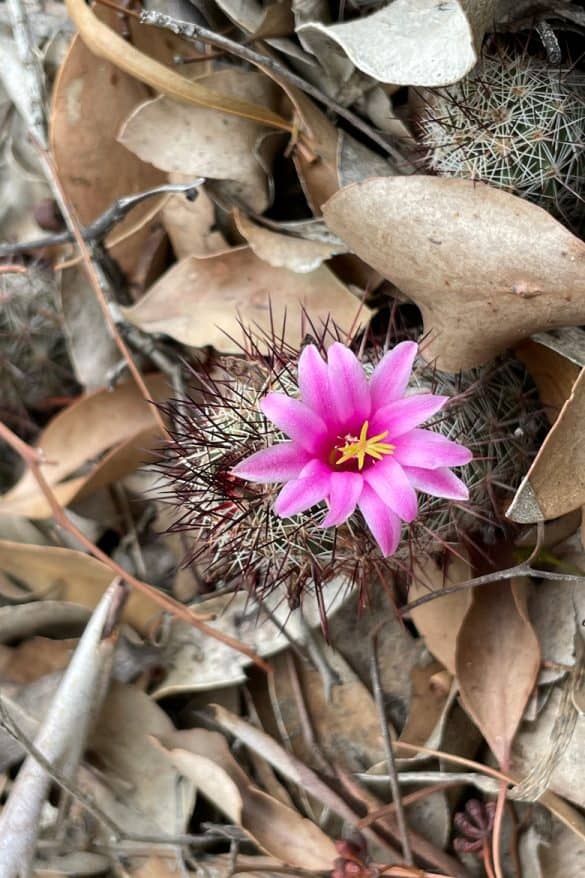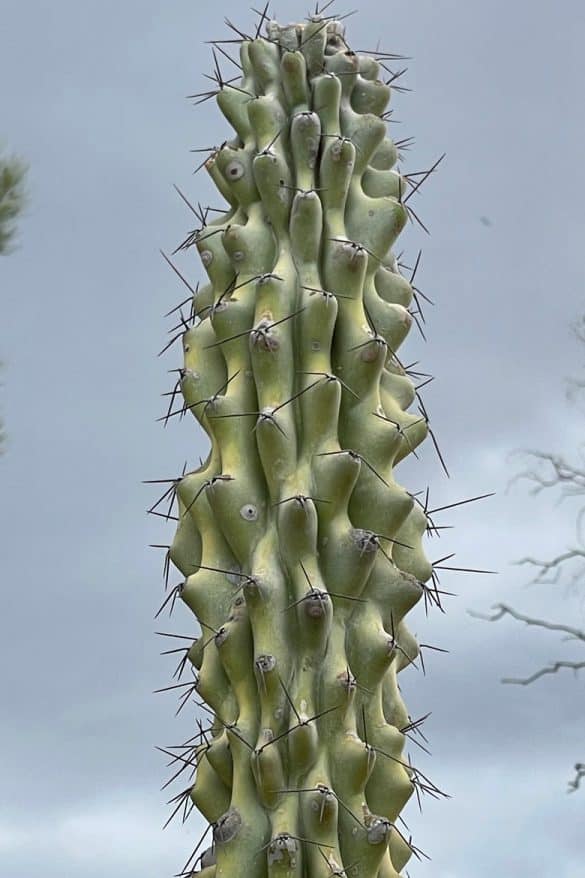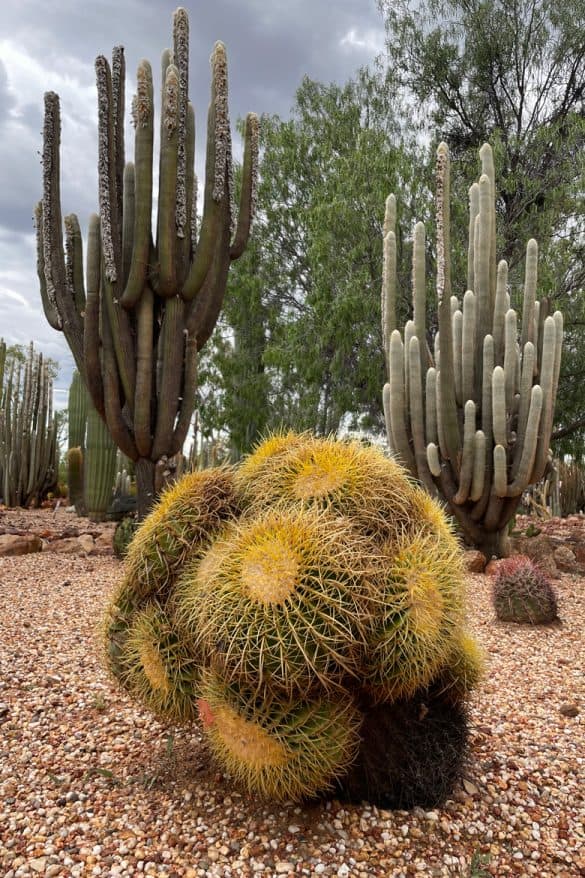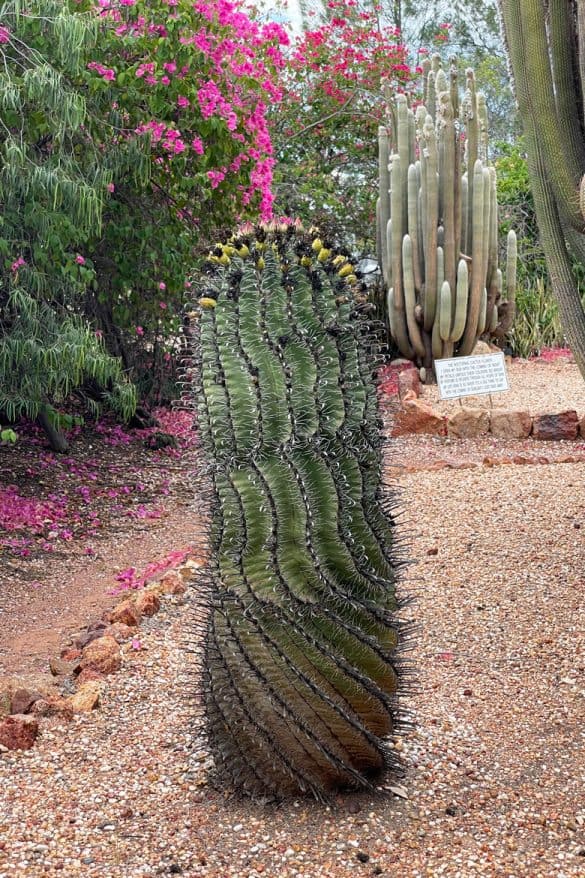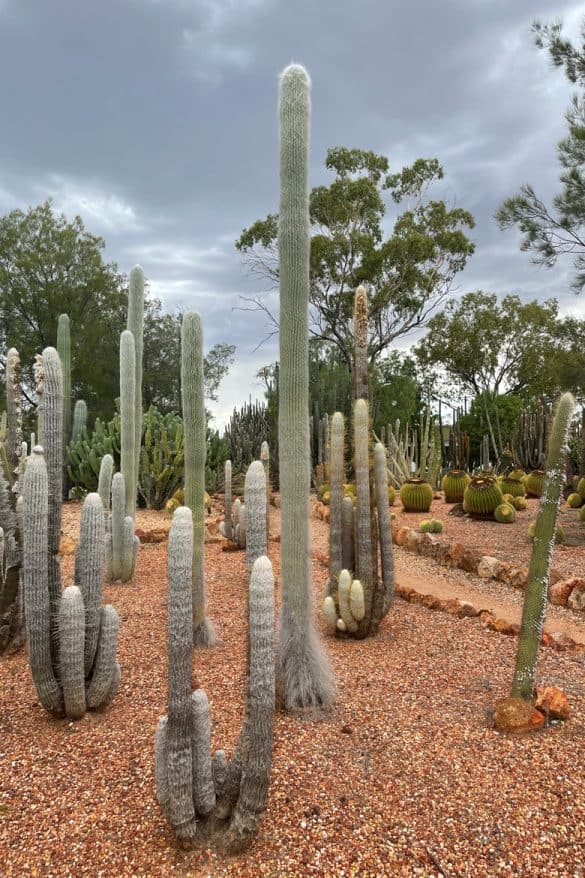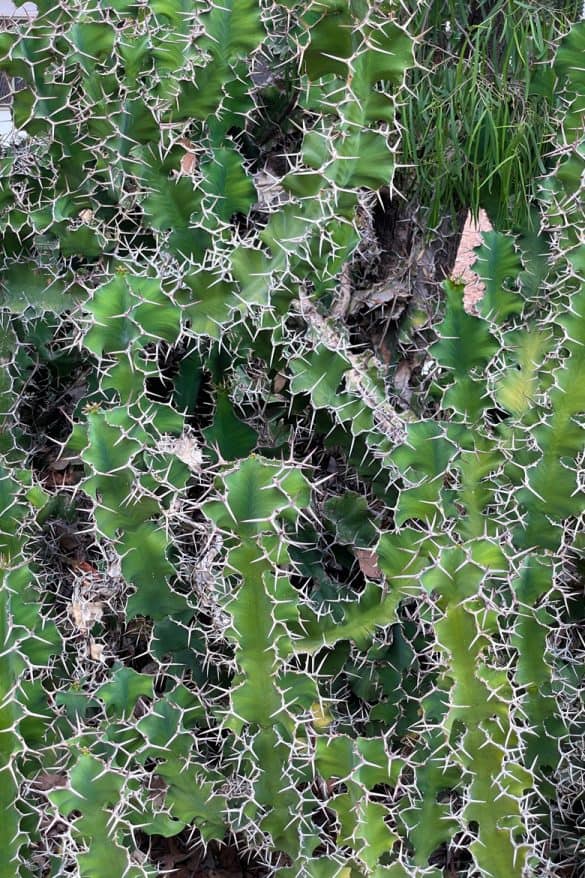One of the southern hemisphere’s largest cactus nurseries is nourished on the opal fields of northern NSW.
The cacti soar like lightning rods from Lightning Ridge’s bedrock, as though in counterbalance to the hubbub of activity occurring underground. Undergirding this remote northern NSW town is a substratum seamed with opals; economic activity here is centred on their extraction and sale.
“It’s an ugly town filled with beautiful things,” says Kat Zimmer, a German woman who moved here via Sydney to indulge her love of the pearlescent gems.
Cacti are foreign to Australia
Much like those fossickers lured to Lightning Ridge from all over the world, the spiny succulents corralled in Bevan’s Cactus Nursery on the outskirts of town have travelled great distances to get here. Every last cactus in Australia is, in fact, foreign; there are no such native plants. A sign in the nursery encapsulates the cacti’s immigrant status with a jaunty rhyme:
There were no cactus plants on Australia’s fair shores till the white man came with seedlings and spores. (Most cactus are from the Americas.)
These transplants have adapted well; they soar and sprawl and creep and huddle in their neat Australian enclosure (although rumour has it some of them have escaped their confines and taken root elsewhere). Indeed, conditions are perfect for these arid-loving specimens here in Lightning Ridge, a town which would be foreign to most Australians with its bleached landscape and scorching summers.
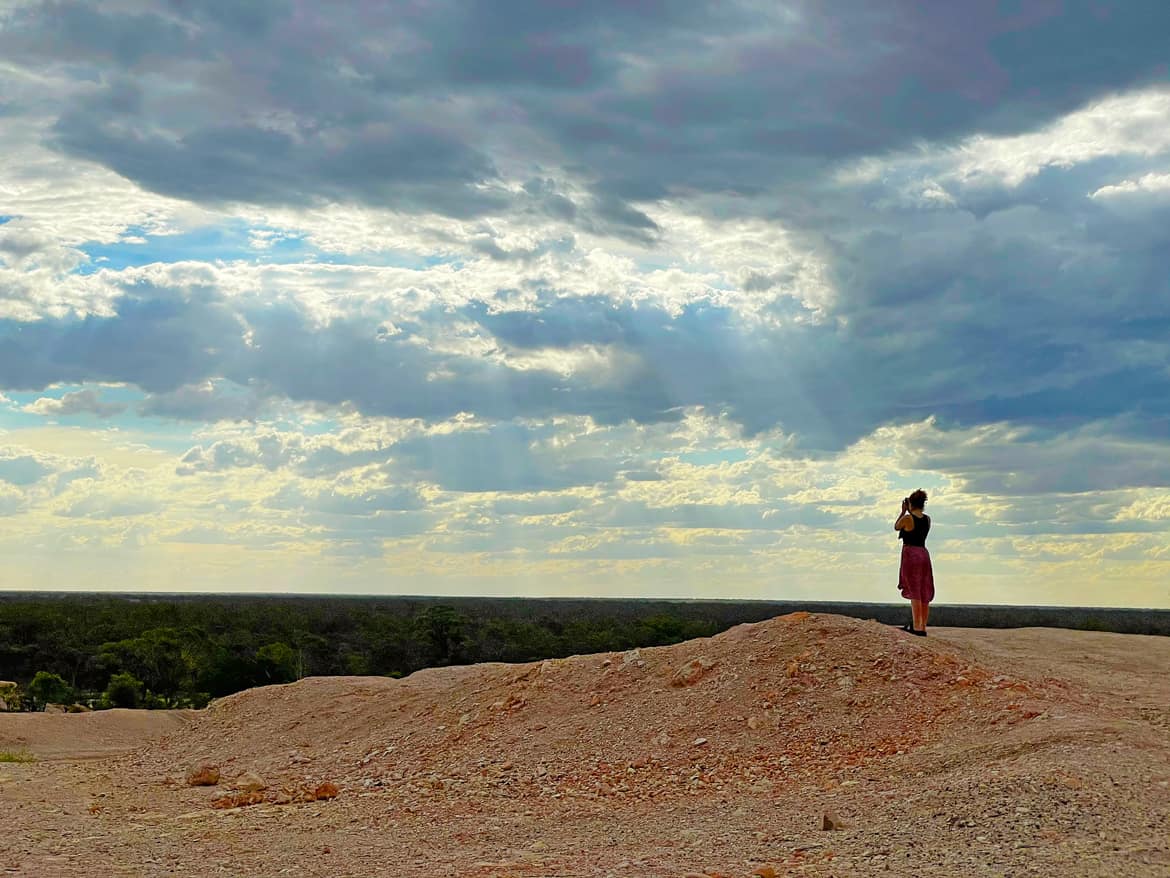
Bleached landscapes and scorching summers make Lightning Ridge the perfect home for cacti. Photo: Catherine Marshall
Opal mining cactus farmers
The seed for this garden – or seeds, rather, sourced from around the world – was planted in 1966 by John and Elizabeth Bevan, the world’s “only opal mining cactus farmers”. Today, Bevan’s is one of the largest cactus nurseries in the southern hemisphere, and home to a century-and-a-half-old specimen which was already well-established when planted. Mr Bevan died in 2004, and the gardens are presented as a living memorial to him. The Bevans’ son, John, manages the nursery today (and is Lightning Ridge’s only locally-born and bred tour guide); he was a wee boy when the garden was first conceptualised, and grew up beside it.
This once-empty plot has been filled in with sculptural plant life. The path threading through the maze is flanked by around 2,500 plants massed artily and marked by educational signposts. There’s the candelabra-styled pachycereus from Mexico and Baja California; the yellow tower cactus from Brazil, veiled in golden fuzz; a grand myrtillocactus geometrizans from Guatemala, and an aristocratically upstanding cleistocactus from Bolivia.
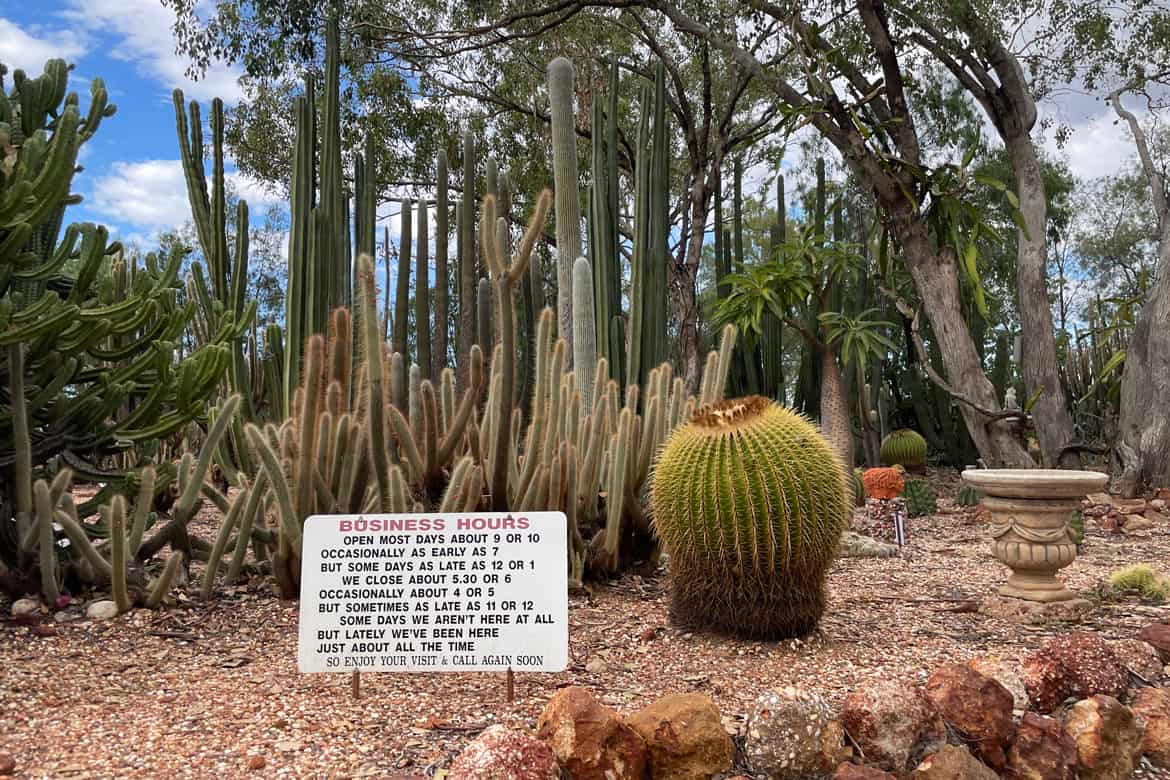
Opening hours are suitably flexible in this frontier town of Lightning Ridge. Photo: Catherine Marshall
Drawing nourishment from Australian soil
There’s a fabulously frilled prickly pear, whose Latin name, opuntia, references the Ancient Greek city of Opus; pincushion cacti popping from cracks in rocks; a sinuous pilosocereus from Barbados and the night-blooming cereus with flowers that emerge under cover of darkness and disappear at the break of dawn. A group of appropriately-named phallic cactuses masses together in an impressive – and anatomically accurate – assortment of shapes of sizes. Bright red flowers spurt from some of the cacti, yellow blooms offset the thorns on others.
It’s is an unexpected sight, these thoroughly foreign plants congregating in a remote Australian town better known for its opals than any discernible plant life. But the transplants are surviving and thriving, drawing nourishment as if by magic from some of Australia’s most parched and far-flung soil. TTW
Catherine Marshall travelled at her own expense. Bevan’s Cactus Nursery is open daily year round; entrance is $10 per person. John Bevan also leads non-commercial town tours. The nursery is one of the stops on the self-guided Car Door tours. Lightning Ridge offers a range of accommodation, festivals and activities.


